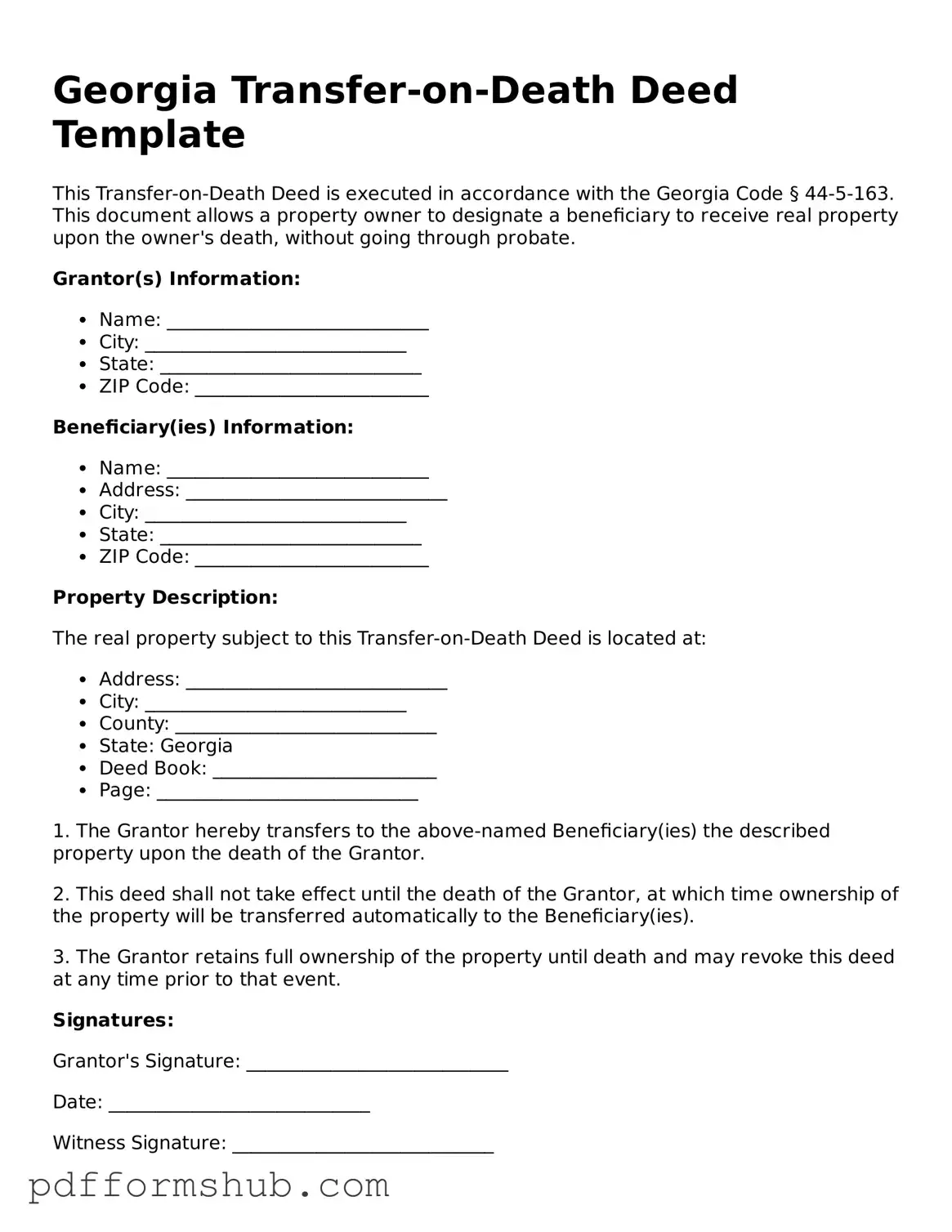In Georgia, the Transfer-on-Death Deed form offers a straightforward way for property owners to designate beneficiaries who will inherit their real estate upon their passing. This legal document allows individuals to transfer ownership of their property without the need for probate, simplifying the process for loved ones during a difficult time. By completing this form, a property owner can maintain full control over their property during their lifetime, ensuring that their wishes are honored after they are gone. The deed must be properly executed and recorded to be effective, and it is essential to understand the specific requirements involved. This form can provide peace of mind, knowing that your property will be transferred directly to your chosen beneficiaries, avoiding potential disputes and complications. Understanding the nuances of the Transfer-on-Death Deed can empower property owners to make informed decisions about their estate planning, ensuring that their legacy is preserved for future generations.
